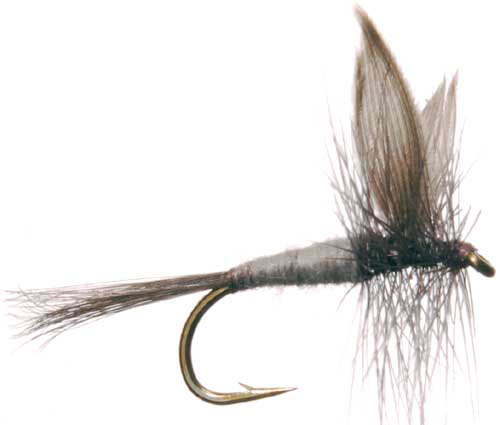January 2011
BLUE DUN
No other pattern is known under a wider variety of names, or dressed in a greater variety of methods.
The Blue Dun dates all of the way back to the days of Charles Cotton and Izaak Walton. Cotton was an English fly-fishing authority and author of The Art of Fly-Fishing. Wallton the legendary fisherman and author of The Compleat Angler. The two met in 1655 and later collaborated on the 5th edition of the venerable The Compleat Angler, in which the two wrote about the Blue Dun and other renowned patterns. Because a bluish-gray hue is prevalent in so many natural insects, the Blue Dun is an essential pattern for fly fishers everywhere and in all conditions. In fact, due to its popularity there may be no other fly pattern referred to under so many different names, nor tied in a greater variety of methods than this honorable and classic mayfly imitation.
The intrinsic characteristics of the natural dun make the artificial Blue Dun irresistible to trout. Upon hatching, the dun rests on the water’s surface where it must wait for its wings to thoroughly dry. Depending on the weather, its wings can dry in several seconds or, if raining, the drying process can takes a number of minutes. This drying time makes the dun particularly vulnerable prey for feeding trout. During an obvious early season hatch with little surface activity, the Blue Dun tied as a wet fly (enclosed), is a highly effective sub-surface selection.
Featured fly: The Blue Dun
Sizes enclosed: #10, #12, #14
Type: Wet fly
Materials:
• Hook: Ball-eyed
• Hackle: light blue hackle
• Body: Blue-gray fur dubbing
• Tail: Light blue hackle
• Wing: Pale gray duck feathers
To join the Trout Fly of the Month Club, Visit FishingEnthusiast.com!

No comments:
Post a Comment